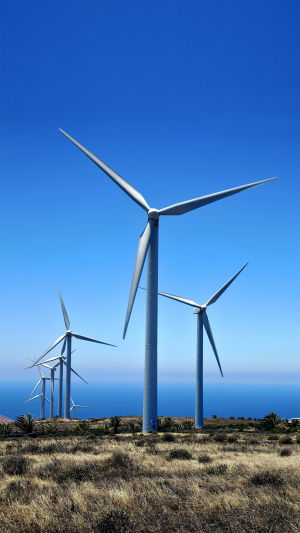Wind energy has been used for thousands of years, before the invention of the steam engine, as an important source of power for sailing ships, carrying water for drinking and irrigation, draining fields, grinding flour, and sawing wood.
The earliest form of use was the 'sailboat'. Egypt is thought to have been the first country to use wind energy, with their windjammers sailing on the Nile some thousands of years ago.
Before the advent of the steam engine, wind machines were a mainstay of power machinery, but with the massive exploitation of coal, oil, and natural gas and the availability of cheap electricity, the various wind machines that were once widely used were gradually phased out.
Because they were too costly, inefficient, and inconvenient to use and to compete with steam engines, internal combustion engines, and electric motors. By the end of the 19th century, the Danes were the first to develop wind turbines, and in 1891 the world's first wind power station was built in Denmark.
Wind power has played an important role in solving the electricity problem for people living in rural and pastoral areas in developing countries, especially since the 1970s when wind power entered a booming phase, with many large and medium-sized wind farms being established in different parts of the world.
It is expected that by the middle of the 21st century, wind energy will become one of the pillars of the world's energy supply and a major source of power for the sustainable development of human society.
As a clean and renewable new energy source, wind energy has been subject to energy in recent years. When you wander around the wind turbine, enjoying the sight of the wind leaves rotating leisurely under the blue sky and white clouds, do you also wonder about the difference between the 3 leaves and 5 leaves of the wind turbine?
Simply put, a 3-blade turbine is easier to balance, whereas too many blades make balancing difficult and costly. At rated wind speeds, the power generated is proportional to the swept area of the wind turbine, a wind turbine with 200 blades can generate the same power as a wind turbine with 1 blade.
As the number of blades increases, the coefficient of wind energy utilization also increases, but in the process of moving from 3 to 4 to 5 blades, the magnitude of the increase in the coefficient of wind energy utilization is much smaller than the increase from 1 to 2 to 3 blades, and from a cost point of view, the benefits outweigh the losses.
So, the smaller the number of blades on a wind turbine the better? First of all, the advantage of more blades is the larger torque conversion rate, but in terms of energy conversion rate, the efficiency of 4 and 5-blade turbines is lower than that of 3-blade turbines.
The main reason for this is that multi-blade fans, due to their high resistance, cause a considerable part of the disturbing flow that interferes with the rotation of the blades, thus reducing the energy conversion rate.
So it is much better to choose a 3-blade than a 4 or 5-blade. (this is also true for electric fans); too few blades again affect the efficiency of the electricity generated. In fact, there is currently a European patent for a 2-blade fan, placed vertically, which doubles its efficiency!
However, the 2-blade hub has a special structure, with a seesaw structure, and fatigue problems are more severe than with 3-blades.
Moreover, the fewer the blades, the higher the rated speed, and the higher the speed, the greater the circumferential linear speed of the blade tip, which causes high wind resistance, and the resistance moment limits the further increase in power generation and speed.
Therefore, too few blades are not good, three blades are a mainly good balance, and low cost, and after a long time to prove, become the common form of a fan today.





